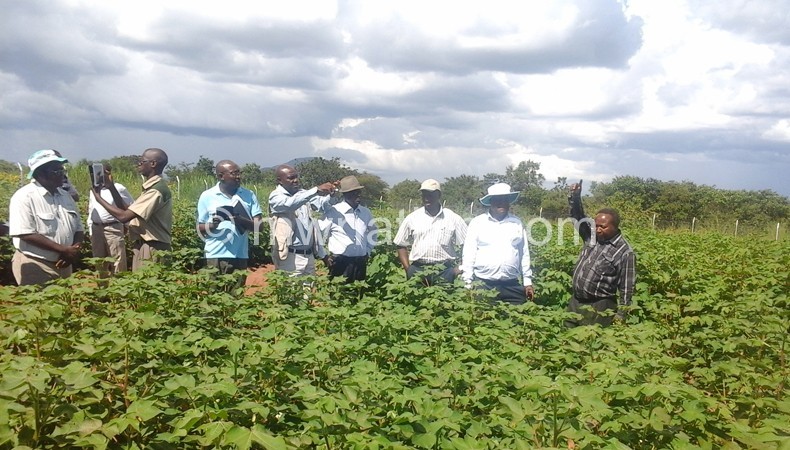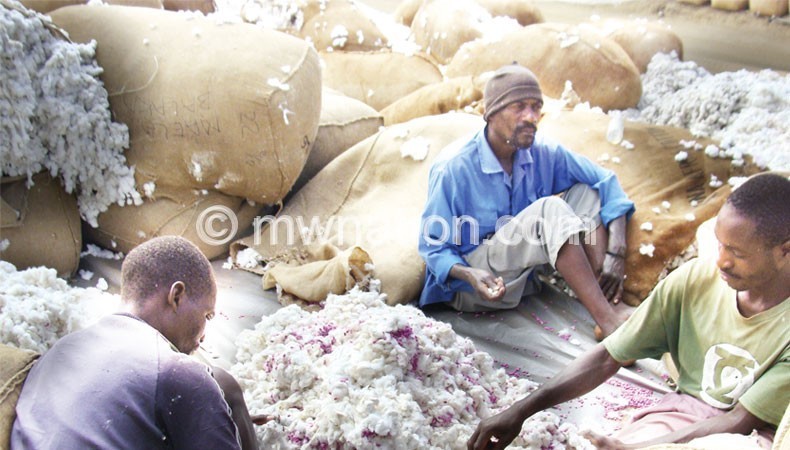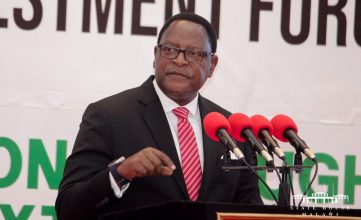Business NewsEditors PickFront Page
Malawi finds hope in GM cotton

According to experts, Malawi stands to improve cotton production if farmers adopt new cotton technologies such as genetically modified (GM) cotton varieties such as Bollgard II.

The research for the project was done in three years in Kasinthula, Toleza Bunda, Makoka and Chitela were done by Monsanto with government, Lilongwe University of Agriculture and Natural Resources (Luanar) and National Commission of Science and Technology partnership. The results of the research are yet to be released.
Africa corporative citizenship intervention cotton manager Duncan Warren, while observing that cotton has not been performing well for the past few years, said time is now for Malawi to try the GM cotton.
“Our cotton market has not performed well and has not met the expectations of both farmers and buyers. Prices, weather have been frustrating to farmers, which in the end has forced a lot of farmers out of the farming business. On the other hand, Malawi has produced low quality cotton because of the variety. It’s about time we try the GM cotton,” said Warren.
Cotton, which is the country’s fourth largest cash crop after tobacco, sugar and tea, generates an estimated K5 billion annually. However, experts have, over the years, argued that the crop has huge economic potential and could rake in substantial amount of foreign exchange, in excess of $500 million (K225 billion) per annum, more than what the country gets from the main export crop tobacco.
While admitting that cotton performance has not been well on the market, deputy director of agricultural and research services Ketulo Salipira said government is doing a number of interventions to improve cotton productivity and market.

“We have a number of interventions to ensure that cotton, which is one of the country’s forex earners, is improved. It is against this that we were engaged in the trials of the GM cotton to increase productivity and production costs,” he said.
In 2010/11 fiscal year, the Malawi Government, through Parliament, approved a K1.6 billion Cotton Development Fund (CDT) meant to be revolving to assist cotton farmers with their inputs. However, the fund has since been dissolved.
In his State of the Nation address, President Peter Mutharika reiterated the 31.4 percentage drop in cotton yield and stressed government continued efforts to scale up cotton production.
“Government will continue to work with the cotton industry and farmers to improve cotton yields and production. Government will endeavour to develop backward and forward linkages in the cotton industry value chains with tremendous potential to create employment and increase foreign exchange earnings,” said Mutharika.
In a recent interview, Famers Union of Malawi (Fum) director of agribusiness and marketing Jacob Nyirongo said in the 2011/12 season, the country produced 100 000 tonnes of cotton before output fell by half to 45 000 tonnes in 2012/13 season.
He said: “The major constraint is the yield per hectre which is low at around 600 kilogrammes per hectre and in some instances our growers spray chemicals very late when the damage has already been done and this affects production.”
As such the introduction of GM cotton maybe the solution to aid farmers to increase their yield and thus meet the demand of cotton on the market. However, farmers have complained of the low cotton prices offered. Last year cotton prices averaged 52 cents (K250).
Commenting on the development, Monsanto chief executive officer Gyanendra Shukla said the GM cotton has come with promises and hopes for high quality and yield which means better returns for the grower.
“We are hopeful that the product will bring high quality which should be answer to dropping prices because of the manufactures need quality,” he said.





